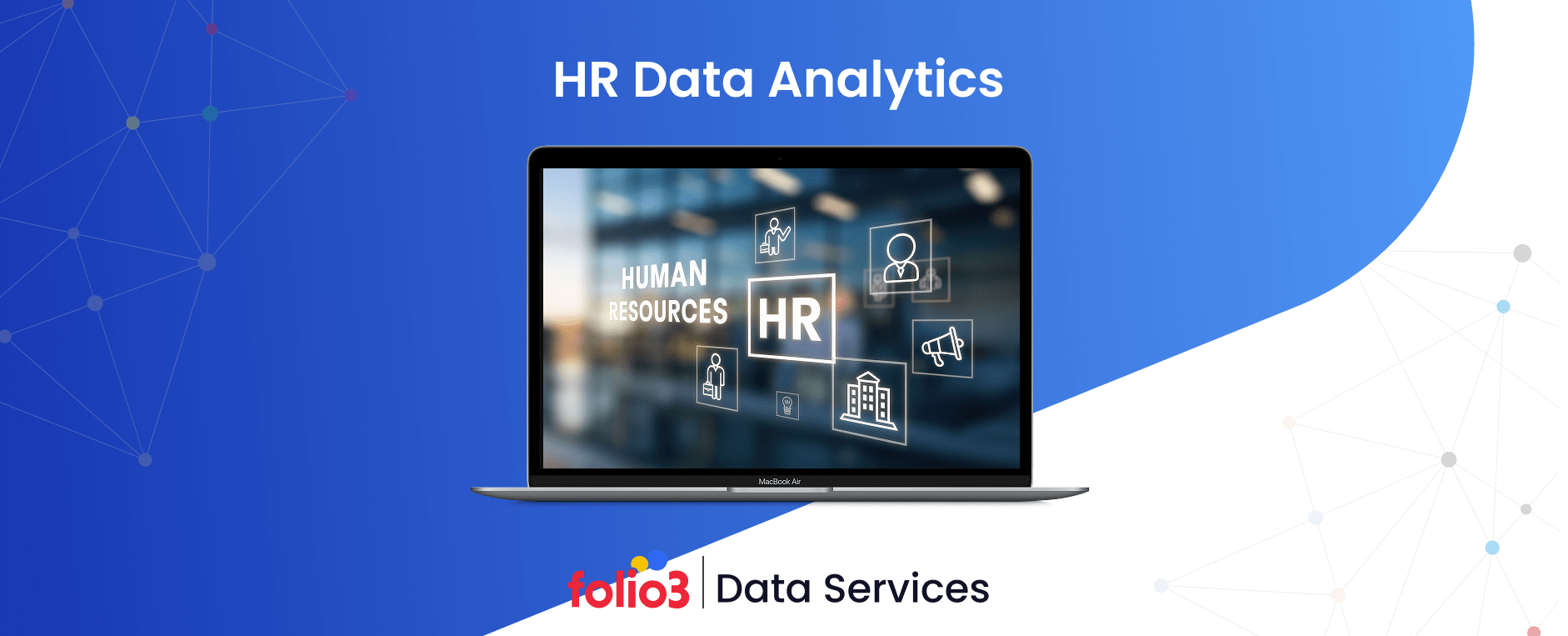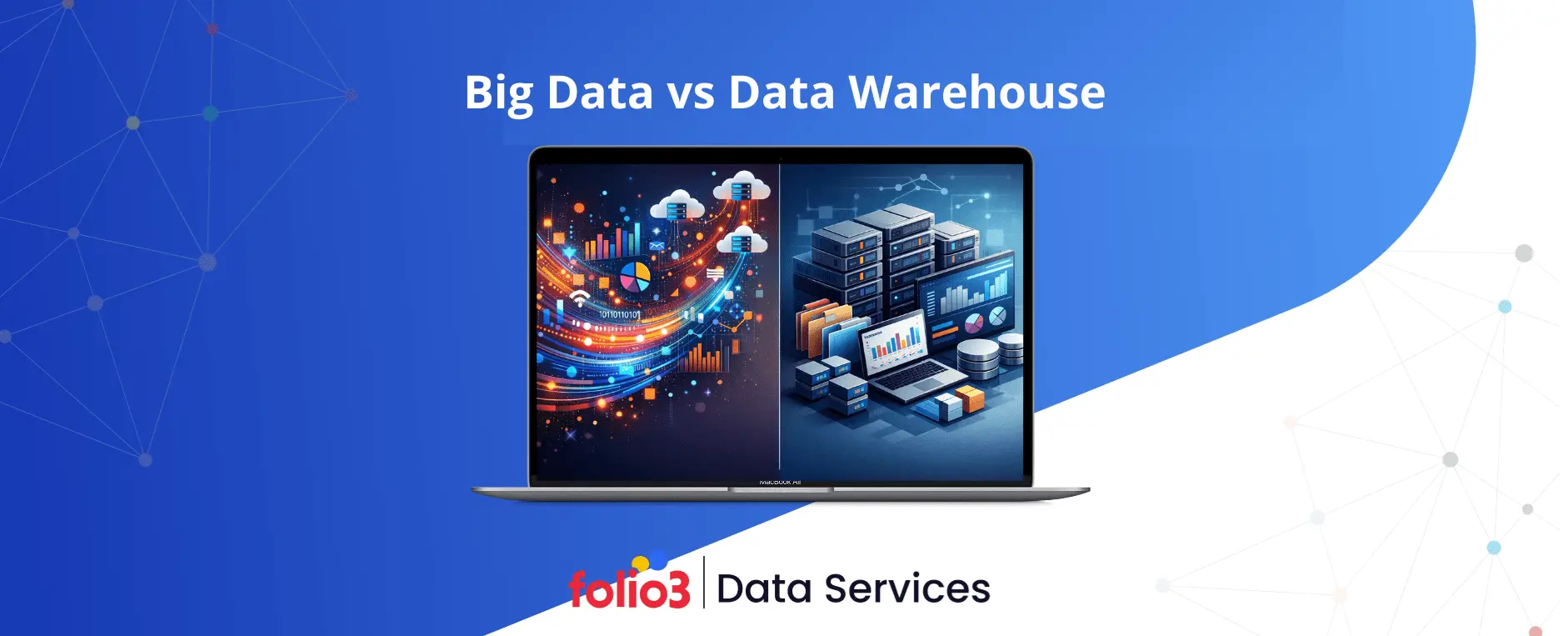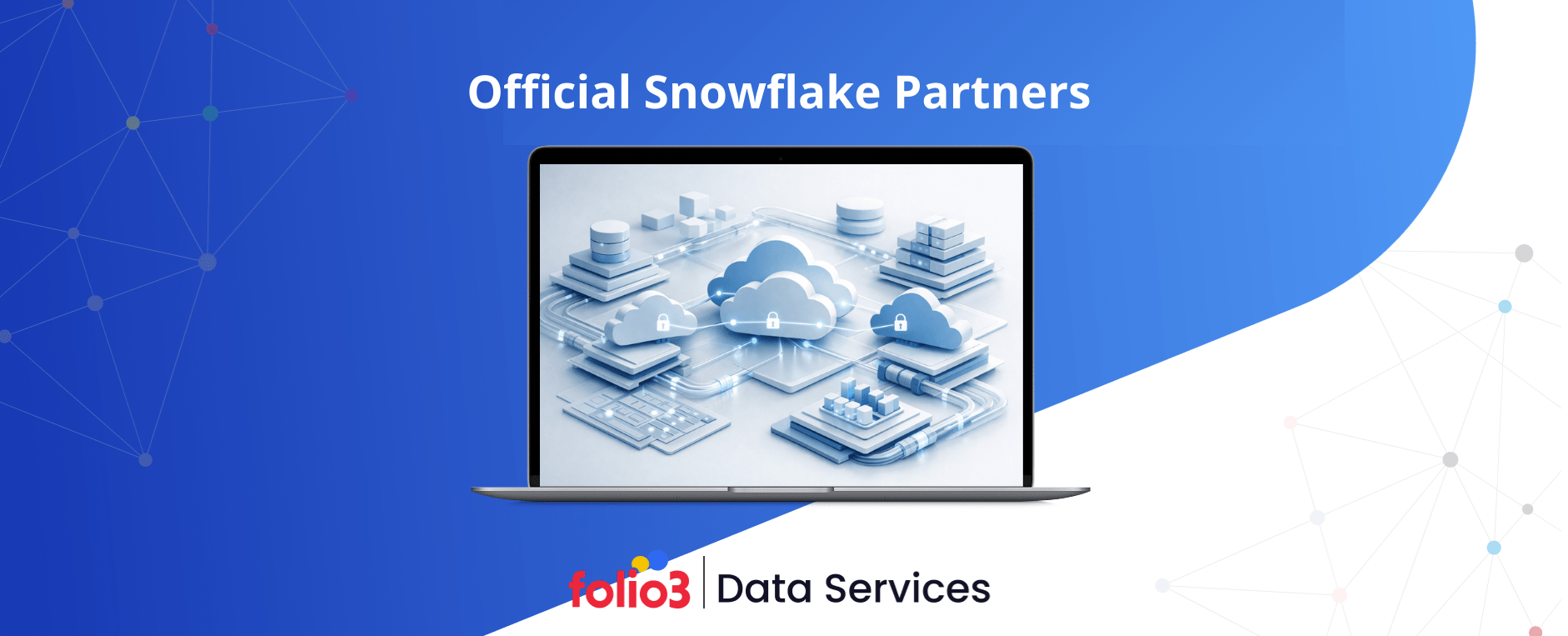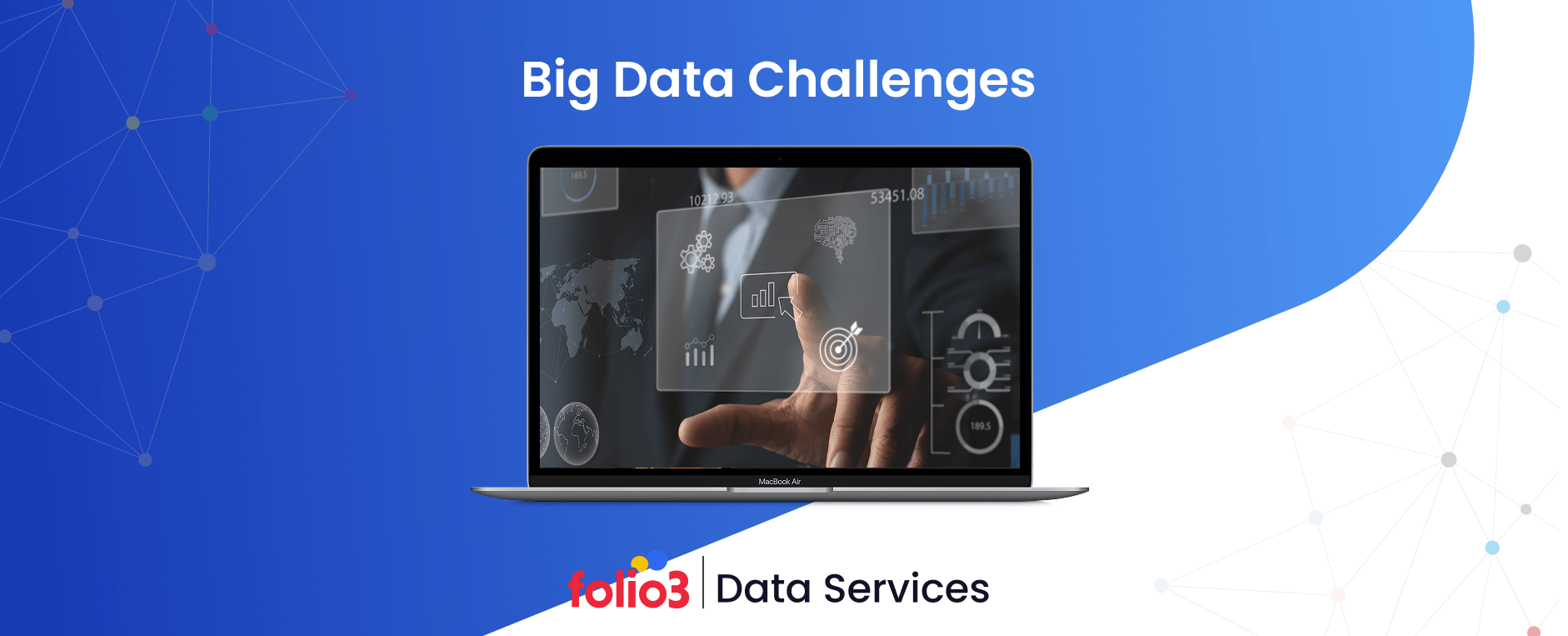The decisions HR teams make today about who to hire, how to retain, and when to promote can have a significant impact on a company’s future. But gut feeling is no longer enough. With organisations collecting more workforce data than ever, the question isn’t whether to use analytics in HR, but how soon you can afford not to.
A report by McKinsey found that companies using people analytics are 2.6 times more likely to outperform their peers in recruiting and 3.1 times more likely to excel in talent retention. HR data analytics has shifted from a “nice-to-have” dashboard feature to a critical tool for driving organisational outcomes.
By analysing employee turnover patterns, improving hiring accuracy, and measuring engagement with real numbers, data analytics in HR enables leaders to ask sharper questions and obtain more precise answers. What started as basic headcount reports has now evolved into predictive models that forecast attrition risks or identify future leaders.
As organisations navigate hybrid work, shifting employee expectations, and economic pressure, the ability to interpret workforce data intelligently becomes a competitive advantage. According to SHRM, data-literate HR teams are emerging as key business partners bridging human insight with measurable impact.
Keep reading this blog to find out all you need to know about HR data analytics and how it improves workforce performance.
What is HR Data Analytics?
HR data analytics is the practice of collecting, analysing, and interpreting data related to human resources to support better decision-making. It goes beyond basic HR reporting by uncovering patterns, trends, and insights that help organisations manage people more strategically.
This approach utilises data from various HR functions, including recruitment, performance, compensation, learning, and engagement, to answer critical questions. For example, “Why are high-performing employees leaving? Which hiring channels yield the most successful candidates? How does employee engagement impact productivity across departments?”
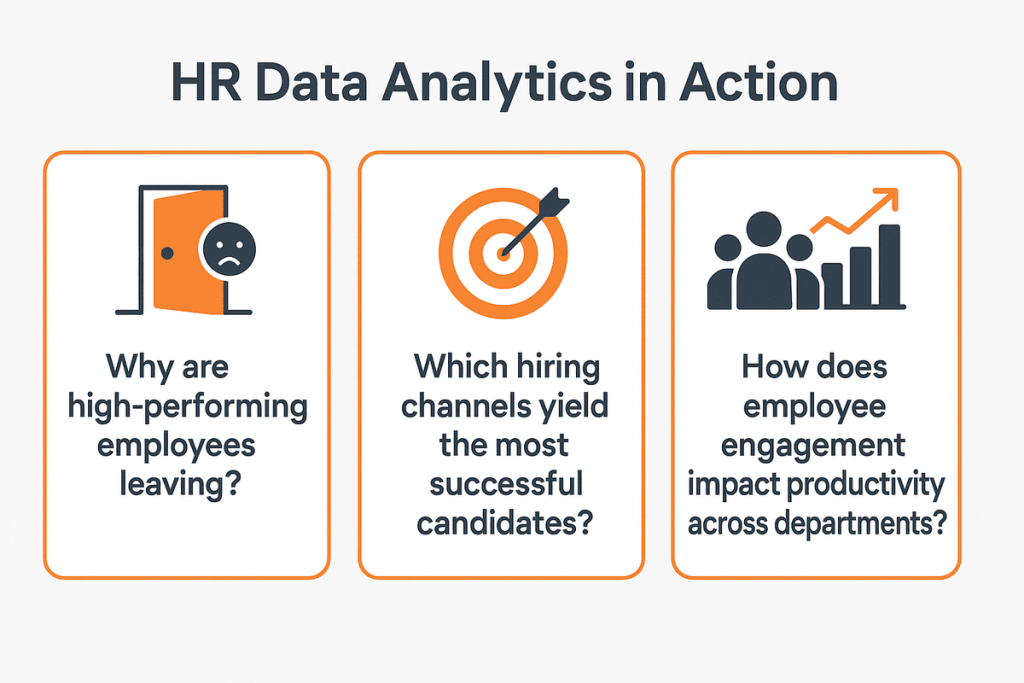
Instead of relying on guesswork, HR analytics turns workforce data into evidence. This enables HR leaders to transition from a reactive to a proactive approach using metrics not only to describe what’s happening but also to predict potential outcomes and prescribe the necessary actions to take next.
At its core, HR analytics brings accountability and clarity to people’s decisions. Aligning HR efforts with business goals ensures that facts, not assumptions, inform talent strategies.
Types of HR Analytics
Understanding the various data analytics types used in HR is crucial for developing a comprehensive, data-driven strategy. Each type serves a unique purpose, from identifying what’s happening to guiding future actions.
Descriptive HR Analytics
Descriptive analytics answers the “what happened?” question. It focuses on summarising historical data such as headcount, turnover rates, absenteeism, or training completion. This is where most organisations begin, using dashboards and reports to track key HR metrics over time.
Diagnostic HR Analytics
This layer digs deeper to explain the “why.” Why did employee turnover spike in Q3? Why is engagement lower in specific teams? Diagnostic analytics uses correlation analysis, heat maps, and segmentation to identify root causes behind HR trends, enabling teams to make more informed decisions.
Predictive HR Analytics
Predictive analytics uses historical and current data to forecast future outcomes. For example, it can predict which employees are most likely to resign and which candidates are likely to excel in the long term. These insights become even more powerful when applied within a structured data analytics framework, enhancing workforce planning, risk mitigation, and strategic decision-making.
Prescriptive HR Analytics
Prescriptive analytics takes predictions a step further by suggesting specific actions. If a model predicts a high risk of employee attrition, prescriptive tools may recommend targeted retention efforts, such as mentorship programs or compensation reviews. This approach helps HR shift from problem-solving to strategic planning.
How HR Data Analytics Enhances Workforce Performance
Effective workforce management isn’t built on instinct; rather, it’s shaped by data. Data analytics solutions empower organisations to make smarter decisions, backed by evidence rather than assumptions. Here’s how it improves performance across critical HR functions:
Talent Acquisition and Recruitment
Data analytics streamlines the hiring process by identifying which sourcing channels produce the highest-quality candidates and analysing historical hiring data to reduce time-to-fill and cost-per-hire. It also uncovers trends in candidate behaviour and resume patterns that correlate with long-term success.
Employee Performance Management
By tracking productivity metrics, goal achievement, and peer reviews, HR analytics helps pinpoint high performers, detect performance dips early, and align individual outputs with business goals. It enables more objective evaluations and identifies areas for coaching or intervention.
Learning and Development (L&D) Optimisation
Analytics can reveal which training programs drive skill improvements and performance gains. This enables HR teams to invest in targeted learning initiatives rather than generic programs, ensuring a better return on investment in learning and development (L&D) spend.
Informing Promotion and Salary Decisions
Rather than relying solely on tenure or manager recommendations, HR analytics assess employee impact, performance trends, and skill acquisition to guide fair and merit-based promotions and compensation decisions.
Retention and Turnover Prediction
Predictive models can identify employees at risk of leaving based on their behaviour patterns, engagement levels, or compensation gaps. When integrated into a broader data analytics strategy, these insights enable preemptive retention efforts, such as stay interviews, recognition programs, or workload adjustments.
Employee Engagement and Satisfaction
Survey data, sentiment analysis, and behavioural metrics help HR gauge morale in real time. These are among the most valuable real-time analytics use cases, allowing leaders to quickly respond to shifts in engagement and design targeted initiatives that boost well-being, culture, and productivity.
Workforce Planning and Strategy
Long-term planning becomes more accurate when powered by analytics. HR teams can model workforce needs based on growth scenarios, skills gaps, retirement trends, and succession risks, ensuring the business stays future-ready.
HR Analytics in Action – Real-World Examples
The value of HR data analytics isn’t just theoretical, but it’s already driving measurable impact in global organisations. These real-world examples demonstrate how businesses are addressing core HR challenges with data-driven strategies.
1. More Smarter Hiring with Predictive Analytics – Google
Challenge
Google faced the classic recruiting dilemma: identifying which candidates would succeed long-term in high-performance roles. Traditional methods, such as resumes and interviews, weren’t strong predictors of success or cultural fit.
Solution
Google’s People Analytics team developed predictive models using historical data from top performers, employee surveys, interview feedback, and attrition rates. This helped redesign job descriptions, interview formats, and even highlighted overlooked talent pools.
HR Tip
Start small by analysing your best hires, tracking what made them successful, and then use those signals to refine future recruitment criteria. Predictive hiring isn’t about volume, but it’s about precision.
2. Reducing Employee Attrition – Under Armour
Challenge
Under Armour struggled with increasing attrition rates in retail locations, especially among new hires. Turnover was impacting team morale and driving up recruitment costs.
Solution
Their HR team utilised data analytics to identify patterns in early exits, including issues with shift scheduling, inadequate training support, and poor management quality. Referencing broader data analytics statistics on workforce retention helped them benchmark their attrition rates against industry norms and design targeted solutions. These insights led to revamped onboarding programs, mentorship assignments, and store-specific retention plans.
HR Tip
Attrition rarely happens without early warning signs. Monitor key variables, such as engagement scores, manager feedback, and absenteeism, to facilitate early intervention.
3. Tackling Absenteeism – E.ON
Challenge
Energy giant E.ON noticed high rates of unplanned absences in its customer service division, which hurt productivity and increased reliance on costly temporary staff.
Solution
Using HR analytics and customer experience analytics, they discovered that teams with unclear workloads and inconsistent schedules had the highest absenteeism rates. Once identified, E.ON implemented workload balancing, wellness initiatives, and team engagement activities to address these issues.
HR Tip
Look beyond surface-level attendance reports. Analytics can help identify environmental, managerial, or health-related drivers that may not be immediately obvious.
From recruitment to retention, let data guide every decision.
Data Analytics in HR – How to Get Started?
HR analytics may sound complex, but getting started doesn’t require advanced tools or large teams. It begins with a clear goal and a structured approach that connects HR data to business outcomes.
Partnering with the right data strategy services can also accelerate this process by helping define objectives and align data efforts with business priorities. Here’s how to take the first steps:
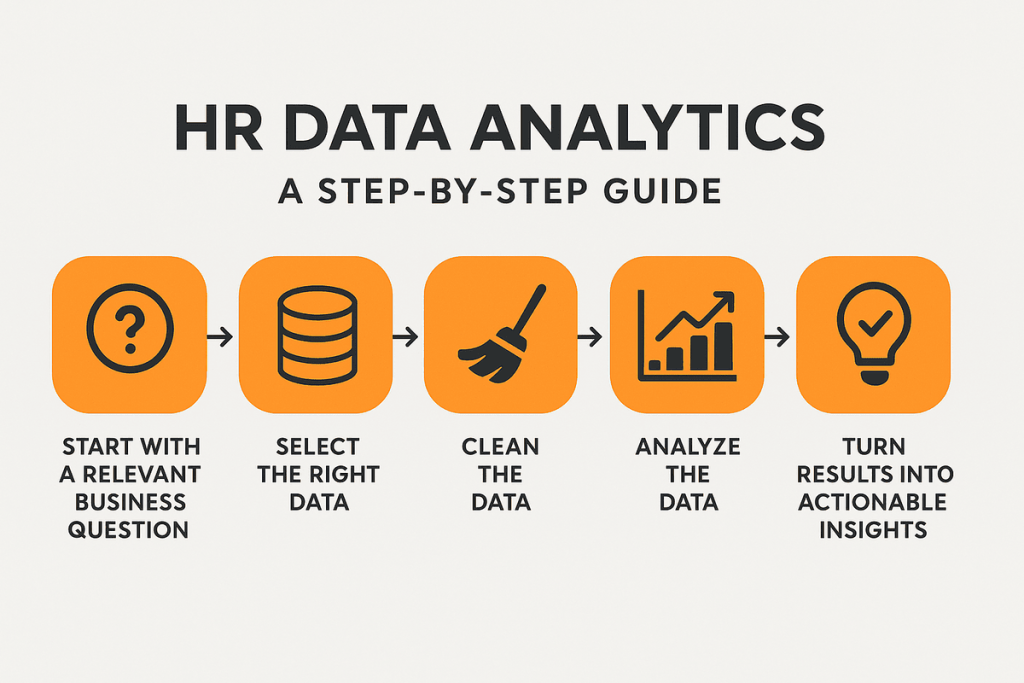
Start with a Relevant Business Question
Begin with a specific problem you’re trying to solve. Are you facing high turnover in a department? Struggling to reduce time to hire? Clearly defined questions lay the foundation for effective analysis and align with common data analytics use cases in HR.
Select the Right Data
Once your question is straightforward, identify the relevant datasets. This could include applicant tracking systems, performance reviews, engagement surveys, or time-off records. Don’t collect everything, but also focus on data that can offer meaningful answers.
Clean the Data
Raw HR data is rarely perfect. Inconsistent entries, missing values, and outdated records can skew results. Take the time to clean and format your data. This step often determines the accuracy of your insights.
Analyze the Data
Use descriptive or predictive analytics techniques to find patterns or anomalies. Even simple tools like Excel, Google Sheets, or Power BI can reveal trends around hiring bottlenecks, absenteeism, or engagement scores.
Turn Results into Actionable Insights
The final step is to translate the findings into strategies. For example, if data shows new hires leave within 90 days, review your onboarding process. Always connect insights to business action, but it’s the only way analytics drive value.
Major Challenges in HR Analytics
Despite its growing influence, HR analytics isn’t without its roadblocks. From ethical concerns to data silos, several challenges can limit the effectiveness of analytics initiatives in HR functions.
Data Privacy & Ethics
Handling sensitive employee information demands a high level of responsibility. HR teams must ensure that data is collected and analysed in line with privacy regulations such as GDPR and HIPAA. Transparency and consent are essential, but analytics should never feel intrusive.
Data Quality & Integration
HR data often comes from disparate systems, such as payroll, performance reviews, surveys, and attendance logs, which don’t always “talk” to each other. Inconsistent or incomplete data can lead to misleading conclusions and poor decision-making.
Engaging in data integration consulting can help organizations streamline and unify these sources, ensuring more accurate and actionable insights.
Resistance to Data-Driven Decisions
Some HR professionals and managers may rely on intuition or experience rather than data. This cultural resistance can slow down adoption, especially if the benefits of data analytics are not communicated.
HR Analytics Skill Gaps
Many HR teams lack the technical skills needed to conduct meaningful analyses. There’s often a disconnect between knowing what to measure and how to analyse it effectively. Upskilling or hiring talent with data literacy is key to overcoming this challenge.
Future Trends in HR Data Analytics
The role of HR analytics is expanding well beyond traditional reporting. As technology evolves, so does the strategic potential of HR data. Here are four key trends shaping the future of people analytics:
Growing AI and Automation
AI is not only changing the way we hire but also transforming how HR predicts behaviour, flags potential issues, and allocates resources. Many organizations now leverage predictive analytics services to build models that detect burnout risk, personalize training, and identify internal mobility opportunities based on skills data.
Real-Time Analytics & Dashboards
Rather than waiting for quarterly reports, companies are moving toward live dashboards that provide HR metrics, including real-time employee sentiment, engagement levels, time-to-fill, and more. These tools rely on robust data transformation techniques to consolidate, cleanse, and update information for accurate, actionable insights.
Cross-Function Integration
The future of HR data analytics is more connected. Integrating data across departments such as finance, operations, and IT helps uncover how workforce performance impacts overall business outcomes. This shift supports HR’s role as a strategic partner, not just a support function.
Predictive Modelling for Wellbeing & Performance
Companies are beginning to utilize big data predictive analytics to identify when employees may be at risk of disengagement, turnover, or burnout before these issues arise. By analyzing large volumes of workforce data, these insights can inform wellness initiatives, learning and development (L&D) programs, or timely manager interventions.
Build a high-impact workforce using data-backed decisions.
FAQs
What types of data are analysed in HR Analytics?
HR analytics typically examines a wide range of data, including recruitment metrics (time-to-hire, source of hire), employee demographics, engagement scores, training records, performance ratings, compensation details, and attrition trends. This data helps uncover workforce patterns and informs decision-making.
How does HR Analytics improve recruitment?
By using predictive models and historical data, HR teams can identify which candidate profiles are more likely to succeed in specific roles. Analytics can also track hiring funnel efficiency, refine job posting strategies, and mitigate hiring bias by focusing on data-driven criteria.
What tools are commonly used for HR Analytics?
Popular tools include Power BI, Tableau, Visier, SAP SuccessFactors, and IBM Watson. Many organisations also integrate analytics features into their existing HRIS platforms, such as Workday or BambooHR. The best tool depends on the complexity of your workforce data and reporting needs.
Is HR Data Analytics only for large companies?
Not at all. While large enterprises may have dedicated analytics teams, small and medium-sized companies can still benefit from HR analytics using affordable tools and tailored services. Even simple trend analysis on hiring or turnover can offer valuable insights for SMBs.
Conclusion
HR data analytics is no longer a “nice-to-have” but it’s a strategic necessity for organisations that want to build more innovative, fairer, and more resilient workforces. From enhancing recruitment and performance management to predicting attrition and aligning learning with business objectives, HR analytics provides a practical approach to informed decision-making.
However, building a successful analytics program requires more than just software. It demands the proper data infrastructure, skilled interpretation, and actionable implementation. That’s where Folio3’s Data Services can help. Whether you’re just beginning your analytics journey or aiming to scale your capabilities, our experts partner with HR teams to translate data into workforce impact securely, ethically, and effectively.
Let us help you make your HR data work harder, so your people can thrive.
